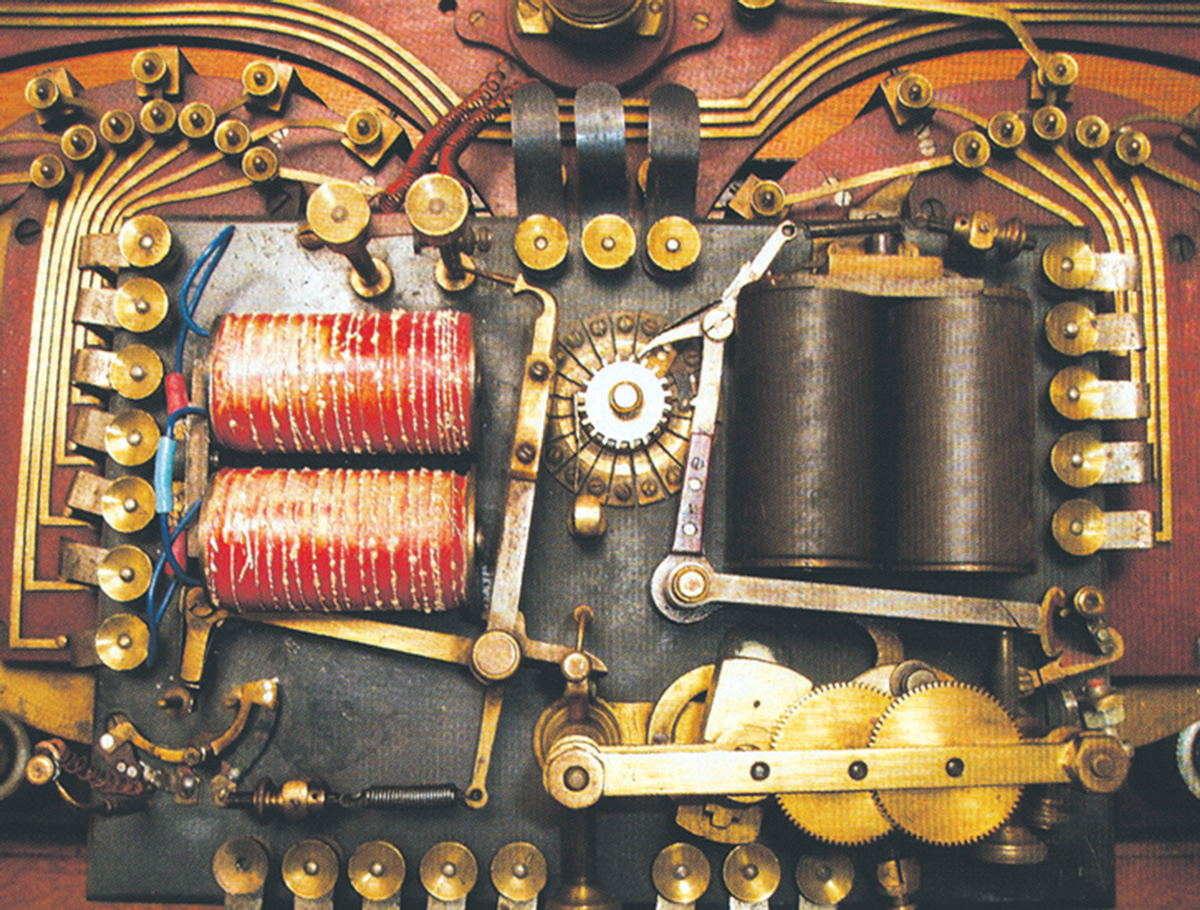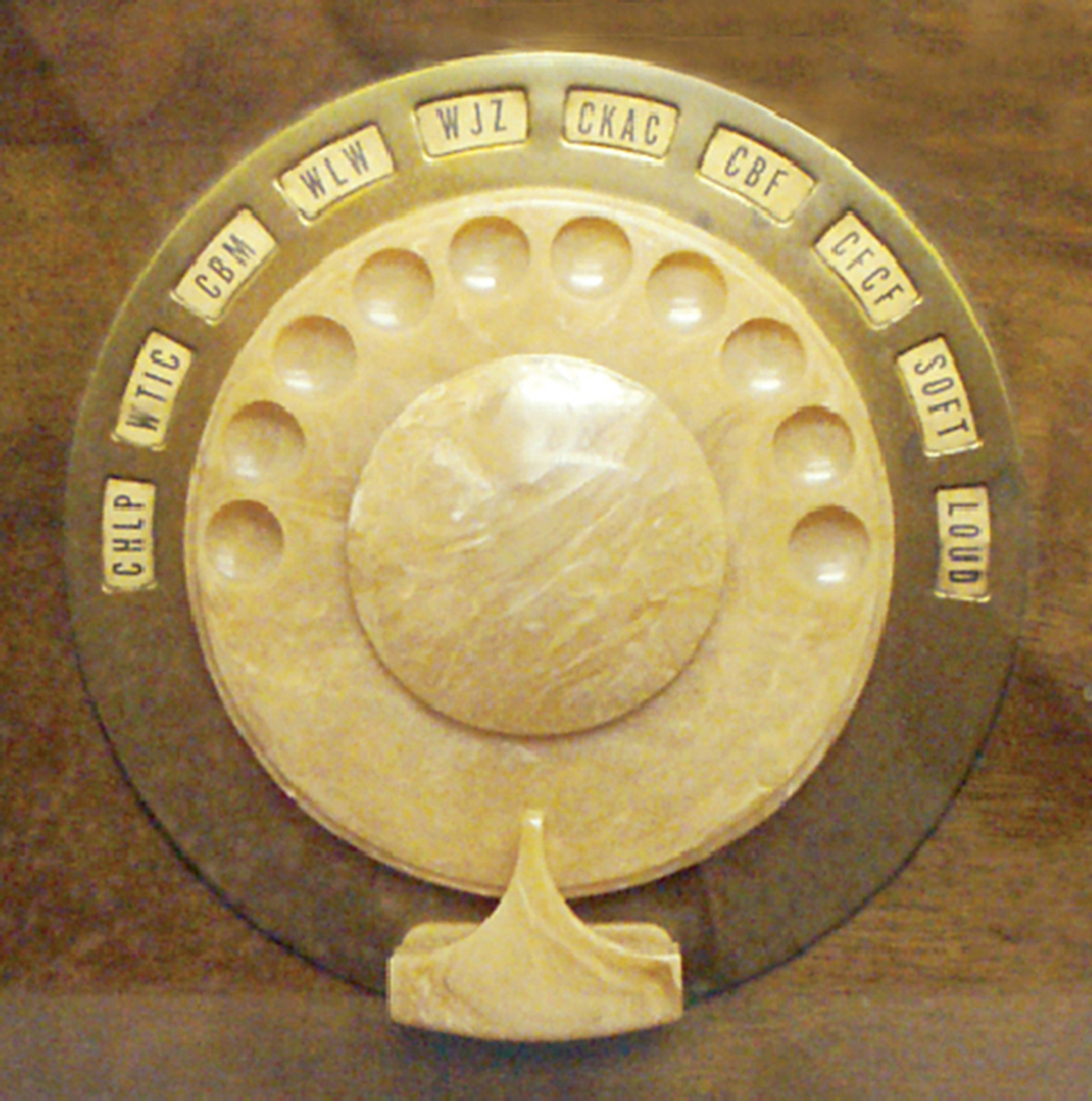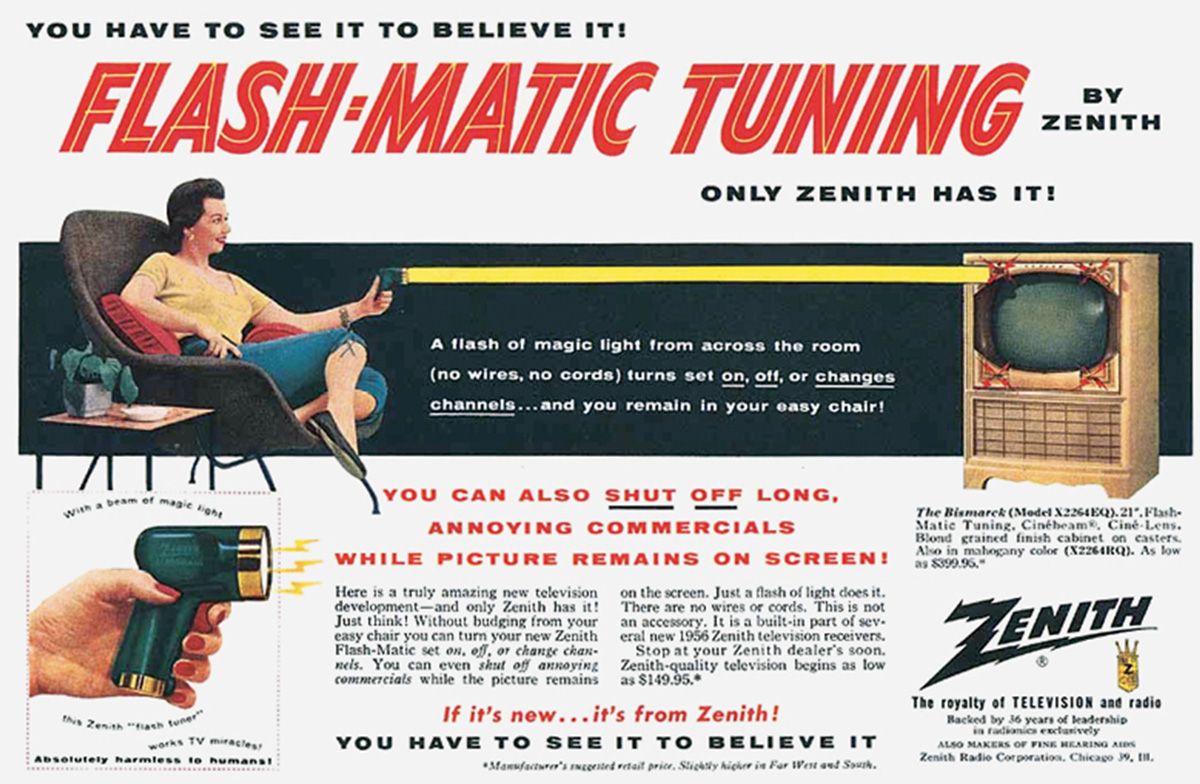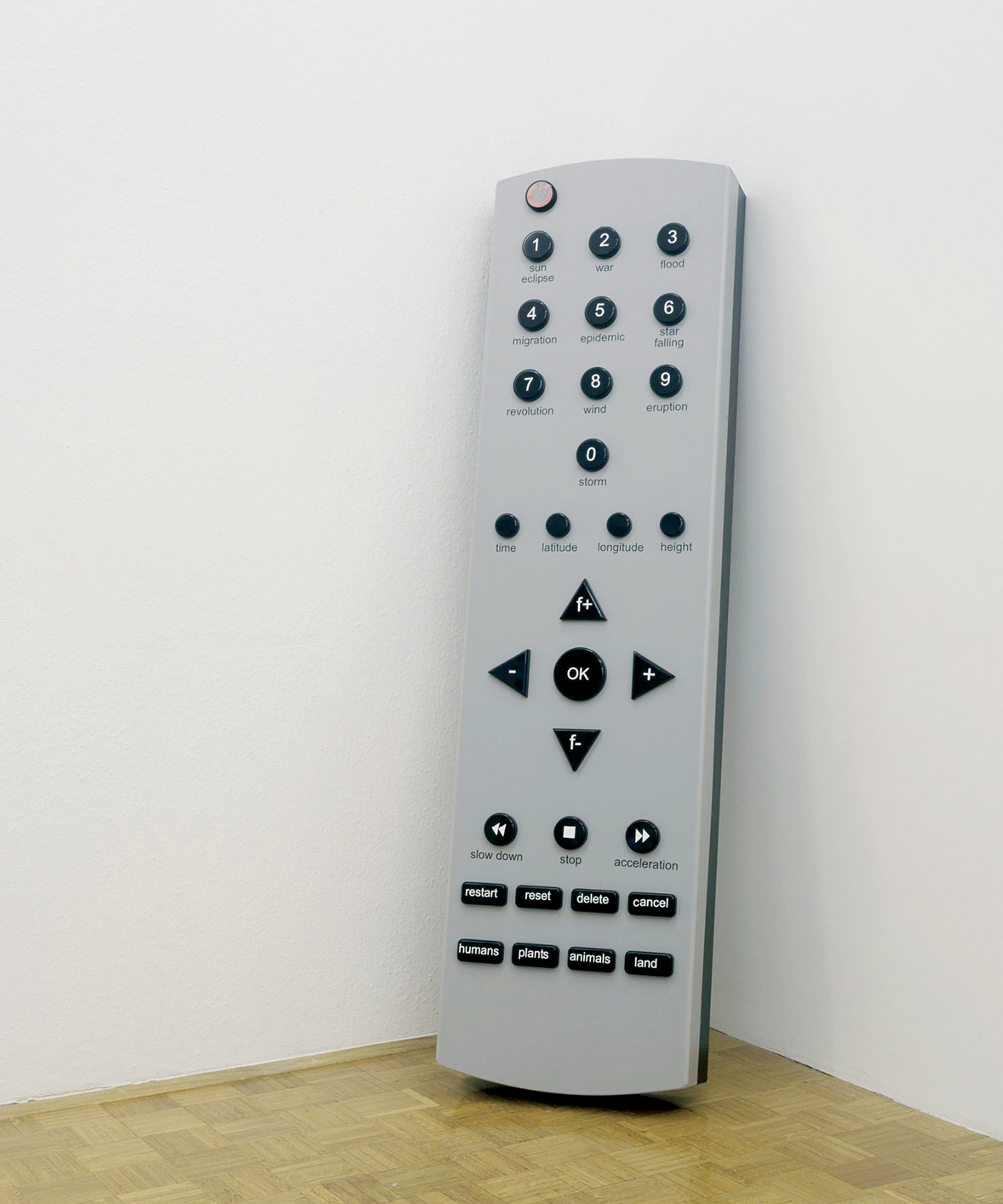Spring 2008
The Recline of Western Civilization
The story of the remote control
Laura Nahmias and Nicholas Nauman
1898
At a private showing for investors held at Madison Square Garden, modern history’s favorite maligned genius, Nikola Tesla, first presented his “Method of and Apparatus for Controlling Mechanism of Moving Vehicle or Vehicles.” Using a radio transmitter to steer, Tesla guided a small boat over a pond. After receiving the US patent for his device later that year, Telsa announced his “devil automata” in an interview with the New York newspaper The Sun. News of the invention quickly spread, and his friend Mark Twain wrote him a perspicacious letter soon afterwards from Vienna: “Have you Austrian and English patents on that destructive terror which you have been inventing? And if so, won’t you set a price upon them and concession me to sell them?” Twain predicted that the armies of the world would bow down before such profound technology, and the remote control would “make war thenceforth impossible.”[1] After a prolonged scandal of intellectual property and propriety, popular credit for radio technology went to Guglielmo Marconi. Tesla retreated into doleful eccentricity, claimed to receive commands from outer space, and spent his latter days with a particularly beloved white pigeon.[2]
1903

1938

1941
Germans developed the first remote-guided missiles, named V1 and V2, abbreviations for Vergeltungswaffen or “weapons of vengeance.” An early test model of the V2 recovered by the British was outfitted with a radio transmitter, leading the British to wrongly assume that the missile could be stopped by merely scrambling radio waves.
1950
Eugene Macdonald, self-described “Commander” of the Zenith Electronics Corporation, developed the “Lazy Bones” remote control, equipped with a mute button to combat his personal pet peeve—commercials. Unfortunately, “Lazy Bones” connected to the TV via a cumbersome cable stretched across the living room floor. Deemed a hazard, the technology was shelved.[6]
1955

1956

ca. 1978
Formerly the province of the military, infrared technology replaced ultrasonics as the industry and living room standard. Instead of sound at too high a frequency to hear, remotes now began to use light at too low a frequency to see.
1999
Individual Americans watched an average of four-and-a-half hours of television per day.[10] Sports Illustrated magazine named Eugene Polley and Robert Adler “Men of the Millenium.”[11]
2004
Mitch Altman, a San Francisco electronics prankster-cum-philosopher, invented and marketed the TV-B-Gone Universal Remote Control. In a ploy to “give people a choice” they may not have realized they were missing, the TV-B-Gone can turn off almost any television in restaurants and bars, waiting areas, and living rooms the world over. Altman continues to report excellent sales.[12]

Vadim Fishkin, Lost & Found / Remote Control, 2006. A remote control for the world at large. Courtesy Galerija Gregor Podnar, Ljubljana / Berlin.
- Margaret Cheney, Tesla: Man Out of Time (New York: Simon and Schuster, 2001), pp. 160–162.
- Fritz E. Froehlich, The Froehlich/ Kent Encyclopedia of Telecommunications (Boca Raton: CRC Press, 1997), pp. 39–40. See also pbs.org/tesla/ll/ll_poevis.html.
- Antonio Yuste & Magdalena Palma, “The First Wireless Remote Control: the Telekine of Torres Quevado,” in Conference on the History of Electronics (Bletchley Park: IEEE, 2004), pp. 1–15.
- Antonio Yuste & Magdalena Palma, “Scanning Our Past From Madrid: Leonardo Torres Quevedo,” Proceedings of the IEEE, vol. 93, no. 7, July 2005, pp. 1379–1382.
- philcorepairbench.com/mystery/history.htm [link defunct—Eds.]. Accessed 18 February 2008.
- Steven D. Strauss, The Big Idea (New York: Dearborn Trade Publishing, 2002), pp. 10–14.
- Ibid.
- Mike Michael, Reconnecting Culture, Technology, and Nature: From Society to Heterogeneity (New York: Routledge, 2000), p. 102.
- Jeremy Butler, Television: Critical Methods and Applications (Mahwah, NJ: Lawrence Erlbaum Associates, 2002), p. 276.
- nielsenmedia.com/nc/portal/site/Public/menuitem.55dc65b4a7d5adff 3f6593614 [link defunct—Eds.]. Accessed 18 February 2008.
- Strauss, The Big Idea, op. cit., p. 13.
- Interview with Altman conducted by the authors, 18 February 2008. See also cornfieldelectronics.com.
Laura Nahmias is an editorial assistant of Cabinet.
Nicholas Nauman is a writer based in San Francisco.
Spotted an error? Email us at corrections at cabinetmagazine dot org.
If you’ve enjoyed the free articles that we offer on our site, please consider subscribing to our nonprofit magazine. You get twelve online issues and unlimited access to all our archives.